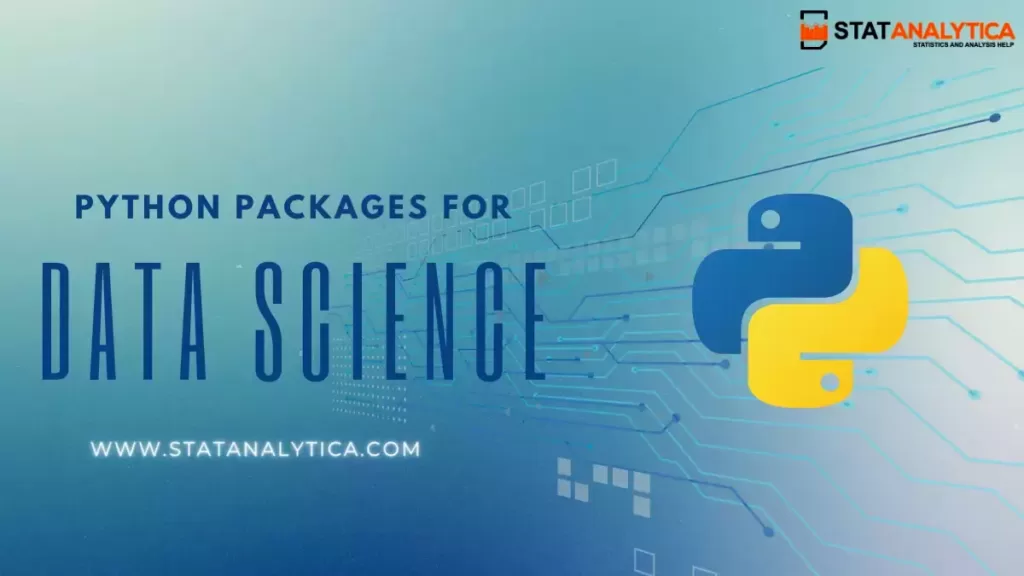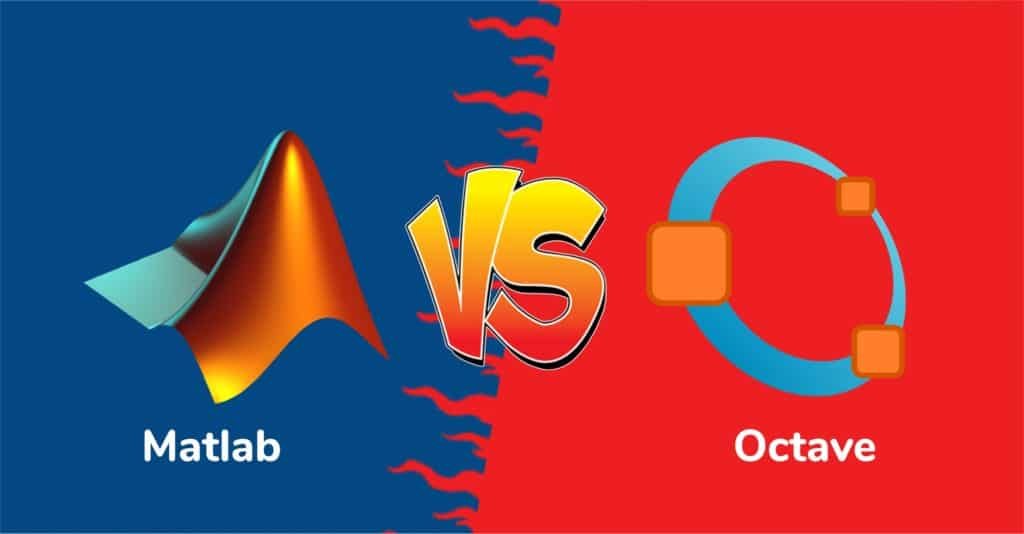If you are a newbie and have ever read an article about Python, we are sure that you know Python’s popularity is growing rapidly day by day. There are various reasons Python has many capabilities, such as “python packages for data science,” that help programmers achieve better outcomes.
When you conclude the last few years, you will see that Python is growing rapidly in demand. A programmer always prefers Python for data science and Machine learning. There are a lot of features that Python gives to a programmer.
Python has applications in Data Science, computer vision, data visualization, 3D Machine Learning, and robotics, and it is a popular programming language among developers worldwide. Python gives various libraries to programmers, which makes it easier to understand or work in Python. In this blog, we will discuss some of the best python data science libraries or python packages for data science in 2022.
Python..!!
Table of Contents
Python is one of the most powerful and extensible programming languages available today for data science and machine learning. Python programming language is a C-based object-oriented programming language. It is a high-level programming language that can do both simple and sophisticated operations. Python also includes plenty of modules and libraries that support various programming languages such as Java, C, C++, and JSON(JavaScript Object Notation).
Why Programmers Prefer Python For Data Science
The Simplicity of Python is the first of several advantages in data analysis. There are a lot of programmers who are experts in other programming languages. But when we talk about Languages used for Data Science or machine learning, Python takes advantage just because of the various python packages for data science. Also, its syntax is straightforward to understand and write, making it easy to get started with and learn quickly.
There are numerous free online resources available to assist you in learning Python. You can download the python programming language because it is freely available on the internet. You don’t need to pay if you want to use Python. Many data scientists are already using Python, indicating a strong community of developers and data scientists who use and enjoy Python.
If the number of people using Python isn’t enough to satisfy you of its importance in data science. Maybe the python data science libraries available to make data science coding easier will. A library is a collection of modules with pre-built code to assist with common tasks. They allow us to help from and build on the efforts of others. Some data science tasks would be difficult and time-consuming to code from scratch in other languages. There are many python packages for data science that Python uses to make programmers very comfortable.
In Python, numerous libraries also help with data cleaning, analysis, visualization, and machine learning activities, such as NumPy, Pandas, and Matplotlib.
Python Packages for Data Science
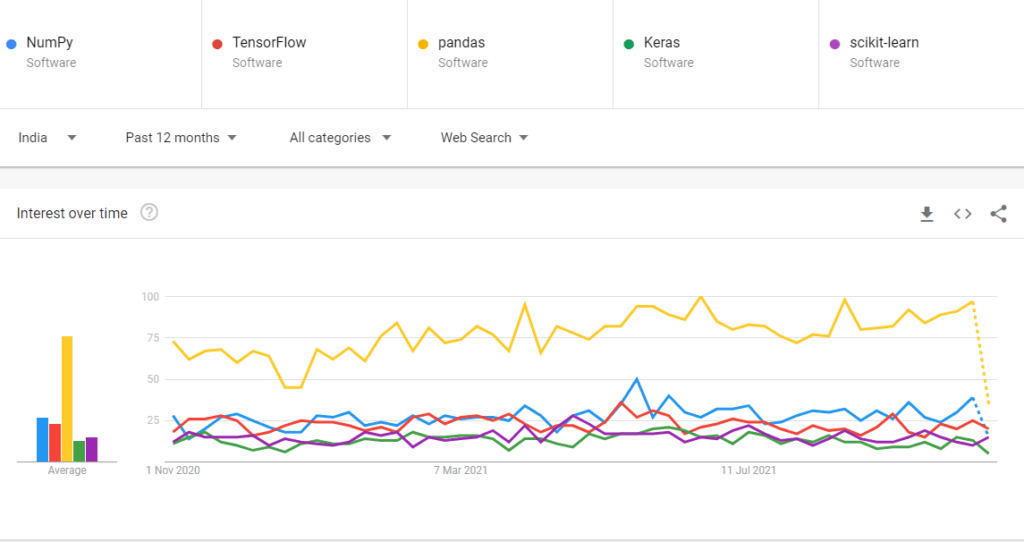
Let us make a list of Python packages for data science that plays a vital role in programming with data science.
NumPy

NumPy, which stands for Numerical Python, is a library that contains multidimensional array objects, a set of algorithms for manipulating those arrays, and a collection of array processing routines. NumPy is a Python library. NumPy can conduct mathematical and logical operations on arrays. It has capacities for working in the field of linear algebra, Fourier transform, and matrices.
Programs in Python serve the same purpose as arrays, although they are slower to process. NumPy’s goal is to provide array objects that are up to 50 times faster than ordinary Python lists. NumPy is a Python library built partially in Python, while most of the parts requiring rapid processing are implemented in C or C++.
NumPy Operations
A developer can execute the following operations using NumPy (Data packages for data science)
- Array operations, both mathematical and logical.
- Fourier transformations and shape manipulation routines.
- Operations involving linear algebra. NumPy includes functions for Linear algebra and the production of random numbers.
TensorFlow

The Google Brain Team created TensorFlow. TensorFlow is one of the python packages for data science. It is an open-source library used in deep learning applications. It was originally designed for numerical compilations, but it now provides a full and flexible ecosystem of tools, libraries, and community resources that allow developers to build and deploy Machine Learning based applications.
Features of TensorFlow
- TensorFlow allows you Easy model building
TensorFlow has various layers of abstraction, allowing you to select the best one for your purposes. Create and train models with the high-level Keras API, making it simple to get started with TensorFlow and machine learning.
- Powerful experimentation for research.
Create and train cutting-edge models without losing speed or performance. TensorFlow provides you with the freedom and control to design complicated topologies with tools like the Keras Functional API and Model Subclassing API. Use eager execution for quick prototyping and debugging.
- Strong ML production anywhere
TensorFlow has always offered a straightforward route to production. TensorFlow makes it simple to train and deploy your model, regardless of the language or platform you use, whether on servers, edge devices, or the web.
SciPy (Scientific Python)

SciPy is an abbreviation for Scientific Python, which solves complex mathematics, science, and engineering problems. It plays a vital role in python data science libraries. It is based on the NumPy extension and enables data manipulation and visualization. SciPy’s numerical routines for linear algebra, statistics, integration, and optimization are simple to use and efficient. Multidimensional image processing, Fourier transformations, and differential equations are among its uses.
SciPy is designed to interact with NumPy arrays and includes many user-friendly and efficient numerical methods, such as numerical integration and optimization routines. They work together on all main operating systems, are easy to install, and are completely free. NumPy and SciPy are simple to use but strong enough that some of the world’s top scientists and technologists rely on them. Use SciPy(Scientific Python) python packages for data science if you need to manipulate numbers on a computer and show or publish the results.
SciPy(Scientific Python) is Often used with Packages like NumPy and Matplotlib(Plotting Library). Programmers use this combination often as a replacement for MatLab, a popular technical computing platform. The Python counterpart to MatLab, on the other hand, is currently regarded as a more modern and comprehensive programming language.
Pandas
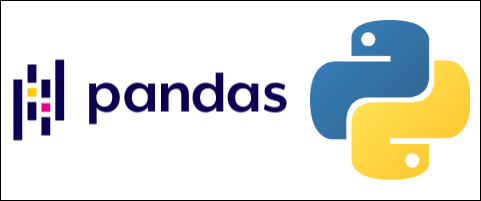
The python pandas library is an extremely powerful library when we talk about Python packages for data science. It is free and open-source, which provides high-performance data structures and data analysis tools for the Python programming language. They provide you with many useful commands and capabilities that you can use to quickly examine your data. The python pandas library is utilized in a wide range of sectors, including academic and business domains such as finance, statistics, economics, analytics, etc.
Pandas is based on two fundamental Python libraries: matplotlib for data visualization and NumPy for mathematical computations. Pandas function as a cover around these libraries, allowing you to use fewer lines of code to access various matplotlib and NumPy methods. Nowadays programmers use pandas in python for data science
Why should you utilize Pandas Library?
Pandas in Python are used by data scientists for the following reasons:
- It Handles missing data with ease.
- It employs the Series data structure for one-dimensional data structures and the DataFrame data structure for multidimensional data structures.
- It offers a quick way to slice the data.
- It allows you to merge, concatenate, or reshape data in a variety of ways.
- It comes with a sophisticated time-series tool for you to use.
Matplotlib
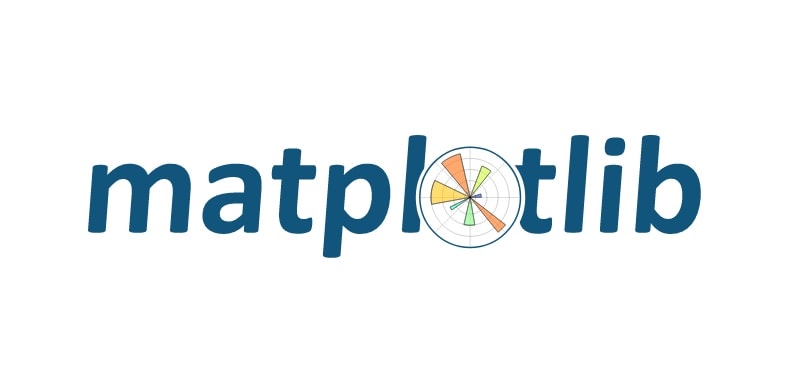
Matplotlib is one of the basic plotting Python packages for data science. It is the most well-known Python visualization package. Matplotlib is extremely efficient at a wide range of operations. It can generate numbers of publication quality in a variety of formats. It can output visualizations in various formats, including PDF, SVG, JPG, PNG, BMP, and GIF. It can generate popular visualization types such as line plots, scatter plots, histograms, bar charts, error charts, pie charts, box plots, and many more. Matplotlib also allows for 3D plotting. Matplotlib is the foundation for many Python libraries. Pandas and Seaborn, for example, are based on Matplotlib.
Keras

Keras is a Python-based deep learning API(Application Programming Interface) that runs on top of TensorFlow’s machine learning framework. It was created to allow for quick experimentation. It is critical to get from idea to outcome as quickly as feasible when conducting research. Library of open-source software Keras is an interface for the TensorFlow library that allows for quick experimentation with deep neural networks.
Francois Chollet created it, and it was originally released in 2015. Keras offers a programmer lots of utilities or pre-labeled datasets which can be loaded or imported directly. Keras “Python packages for data science” help for innovative research, versatility, and a very friendly user interface for easy understanding.
Features of Keras
- Simple UI: Simple, but not overly so. Keras decreases developer cognitive strain, allowing you to focus on the important portions of the problem.
- Adaptable: Keras follows the notion of incremental complexity disclosure simple procedures should be rapid and easy. On the other hand, arbitrarily sophisticated workflows should be possible via a clear path that builds on what you’ve already learned.
- Powerful: Keras has industry-leading performance and scalability: it is utilized by organizations and companies such as NASA, YouTube, and Waymo.
Seaborn

Seaborn is a matplotlib-based Python data visualization package. There are various python data science libraries and seaborn is one of them. It offers a high-level interface for creating visually appealing and informative statistical visuals. Seaborn is the most widely used statistical data visualization toolkit, and it is used for heatmaps and visualizations that summarise data and display distributions. Two of Python’s most capable visualization packages are Seaborn and Matplotlib. It is Matplotlib-based and may be used on both data frames and arrays. Seaborn features fewer syntax and beautiful default themes. However, Matplotlib is more easily customized by accessing the classes.
Features of Seaborn
Seaborn is built on top of Matplotlib, Python’s fundamental visualization toolkit. It is supposed to be a supplement, not a substitute. Seaborn, on the other hand, has some very crucial features. Let’s take a look at a couple of them.
- Seaborn has built-in themes for decorating matplotlib graphics.
- Data visualization for univariate and bivariate data.
- Linear regression models are fitted and visualized.
- Plotting time-series statistical data.
- Seaborn works well with data structures written in NumPy and Pandas.
- It includes themes for decorating Matplotlib graphics.
Scikit-Learn
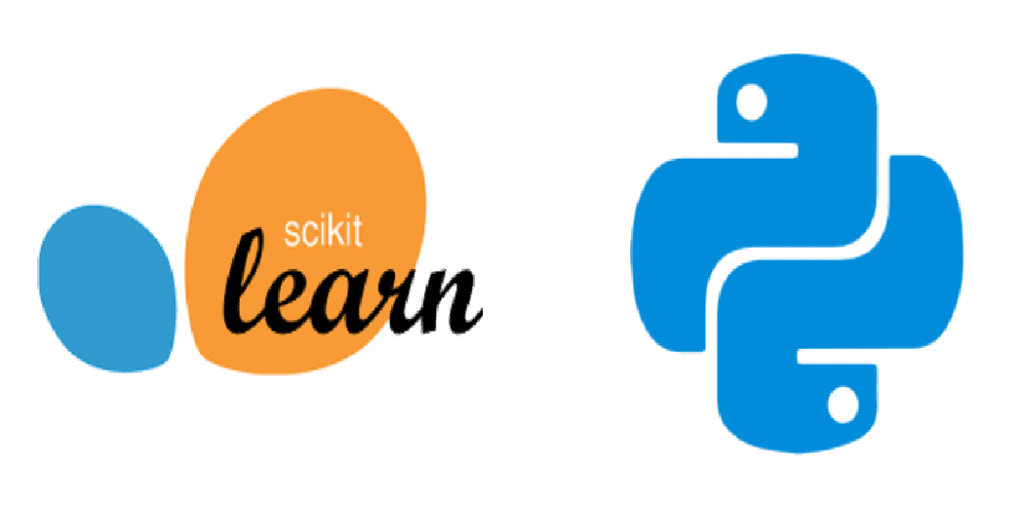
Scikit-learn (Sklearn) is Python’s most useful and robust machine learning library. It offers a set of efficient tools for machine learning and statistical modelings, such as classification, regression, clustering, and dimensionality reduction, through a consistent Python interface. This mostly Python-written package is based on NumPy, SciPy, and Matplotlib.
Features of Scikit-Learn
- Dimensionality Reduction: It reduces the number of properties in data to be summarised, visualized, and feature selected.
- Cross-Validation: It is used to test the correctness of supervised models on unobservable data.
- Supervised Learning algorithms: Scikit-learn includes almost all common supervised learning algorithms, such as Linear Regression, Support Vector Machine (SVM), Decision Tree, etc.
- Unsupervised Learning algorithms: However, it includes all of the common unsupervised learning algorithms, such as clustering, factor analysis, PCA (Principal Component Analysis), and unsupervised neural networks.
Conclusion
In this blog, we have discussed “python packages for data science” I hope you grasp some knowledge from here. We have also included Features of various python data science libraries. As previously said, it is interpreted, dynamically typed as well as portable, free, and accessible. That’s a good incentive to look into Python. Start learning Python right away to boost your career.
There are lots of students who face many issues related to Python Homework Help. So we are the option for them as we have been dealing with assignment help for numerous years. If you need any assistance with Python Programming Help, feel free to contact us.
FAQ(Frequently Asked Question’s)
Why are Python packages necessary?
Python libraries are a collection of helpful functions that eliminate the need to write code from scratch. Python libraries are essential in developing machine learning, data science, visualization, image and data manipulation, and other applications.
What is the difference between package and library?
The package is nothing more than a namespace. Within the package, there are additional sub-packages. The library contains various related code features that allow you to execute numerous operations without writing your code.
